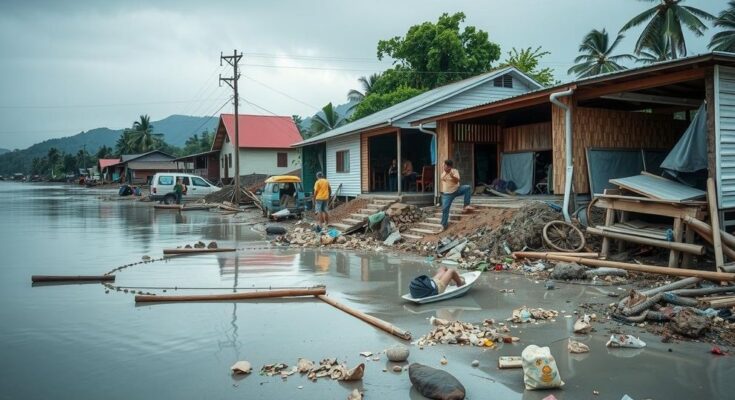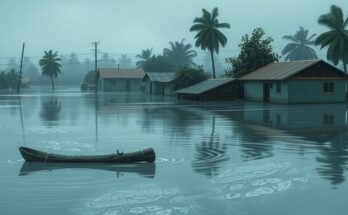The December 2004 Sumatra earthquake, with a magnitude of 9.1, resulted in a massive tsunami that claimed over 230,000 lives across countries including Indonesia, Sri Lanka, India, and Thailand. It displaced millions and became one of the deadliest natural disasters in recorded history, exceeding the devastation of other significant earthquakes.
On December 26, 2004, a catastrophic 9.1-magnitude earthquake struck off the coast of Sumatra, Indonesia, engendering a devastating tsunami that affected multiple countries, tragically resulting in over 230,000 deaths. The tsunami’s impact led to the displacement of approximately 1.7 million individuals in severely impacted regions such as Indonesia, Sri Lanka, India, and Thailand. As survivors recall, the sea’s sudden retreat gave way to overwhelming waves, invoking sheer terror and prompting desperate attempts to save loved ones. This earthquake, while not the strongest in history, remains unparalleled in terms of its death toll, eclipsing prior recorded events. The devastation experienced on that fateful day serves as a stark reminder of nature’s formidable power and the profound losses suffered by countless lives.
The significant earthquake triggered a tsunami that reached as far as East Africa, affecting over a dozen countries. Notably, the devastation inflicted on Indonesia, Sri Lanka, India, and Thailand resulted in significant loss of life and massive displacement. The earthquake was recorded at 9.1 magnitudes, yet it is the subsequent loss of life that marks it as one of the most catastrophic natural disasters in history. Understanding this earthquake’s context requires exploring the geological settings that create such seismic events and their far-reaching effects, particularly tsunamis, which can also result in extensive casualties as highlighted in records from other historical earthquakes.
In summary, the Sumatra earthquake and consequent tsunami remains one of the most tragic natural disasters ever recorded, responsible for an immense loss of life and significant destruction across multiple countries. Despite not being the strongest earthquake by magnitude, its consequences were unparalleled in human fatalities. The importance of this event lies not just in its immediate devastation but also as a historical lesson about the vulnerabilities of coastal communities and the critical need for preparedness against such seismic threats.
Original Source: arkvalleyvoice.com




